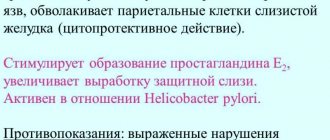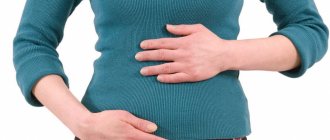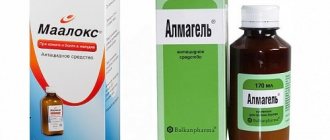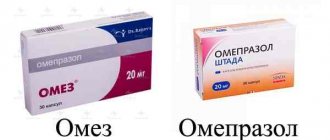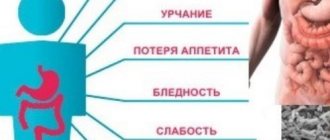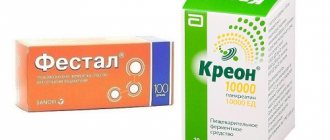Intestinal digestion. Suction
Small intestine
, the length of which reaches four meters, is densely and neatly laid in the lower part of the abdominal cavity.
It has such folding that its area reaches 250 square meters! Food travels through it for a long time, giving the body useful substances. The small intestine is divided into three sections: the duodenum
(about 25 centimeters - those same 12 fingers, but the ancient anatomists apparently had large fingers),
the jejunum
and
the ileum
. The boundary between the last two is imperceptible, but it is agreed that the jejunum constitutes two-fifths of the small intestine, and the ileum is the rest. The ducts of the liver and pancreas are discharged into the duodenum.
The mucous membrane of the small intestine and its features
1. Intestinal juice
, it can be up to two liters per day. The juice contains many enzymes that break down all organic substances.
2. Regulation of the intestinal glands
goes through nervous and humoral mechanisms in parallel.
3. The inside of the small intestine is densely covered with villi and microvilli. It is necessary to distinguish the villi of the mucous membrane
(their density is up to 2500 per 1 square centimeter) and
microvilli of mucosal epithelial cells
. The first is the folded surface of the intestine, covered with epithelium. The latter are located inside each epithelial cell, that is, inside the villus itself. They are outgrowths of the membrane, inside which microfilaments made from the protein actin are located. One epithelial cell has approximately 2500-3000 microvilli.
4. The area of the small intestine grows due to villi and circular folds, the elongated shape of the epithelial cells of the mucous membrane.
5. The mucous membrane is “seated” with lymphatic follicles
- groups of lymphocytes and antibody-forming cells.
6. Pinocytosis
.
Digestion in the small intestine
1. Cavity digestion
. In the intestinal cavity, processing occurs with enzymes and intestinal juices. The contents move, knead, and become a liquid homogeneous mass during peristalsis, that is, uniform wave-like compression of the intestine. Peristalsis is provided by two layers of smooth muscles: longitudinal and circular.
2. Parietal digestion
. If the first stage can be called rough processing, then the second is a thorough, detailed digestion between the intestinal villi. Russian scientist A.M. Ugolev established the importance of digestion on the surface of the villi, between which there are enzyme molecules. Each villus has capillaries, lymphatic vessels, and nerve fibers.
3. Suction
.
Simple substances are exposed to it - amino acids, glucose, as well as sodium and potassium salts. Note that fats are absorbed into the lymph
, not into the blood. Glycerol and fatty acids, which we obtain from the breakdown of consumed fats, are again converted into our characteristic fats on the intestinal villi. And then these fats are absorbed into the lymph.
About suction in general
1. It begins slightly in the oral cavity - water, medications, monosaccharides, and alcohol are absorbed here.
2. Water, alcohol, ions, and monosaccharides (amino acids, glucose) are also absorbed in the stomach.
3. The main absorption occurs in the intestine - primarily organic substances are absorbed in the small intestine, and water and mineral salts are absorbed in the thick intestine.
Digestion in the large intestine
.
Structure of the large intestine
1. Has folds (furrows) and swellings. It is much shorter and thicker than the thin one, its length is 1-2 meters.
2. Divided into several sections: blind, colon
(includes ascending, transverse, descending parts) and
rectum
.
The cecum has a notorious appendage with a capricious disposition - the appendix
. Its mucous membrane is richest in lymphocytes and antibody-forming cells. The rectum ends at the anal outlet with a powerful anal sphincter.
3. Releasing the rectum is a reflex act in which the diaphragm and the muscles of the abdominal wall participate. This reflex is regulated from the sacral spinal cord.
4. Fiber helps contract the muscle walls of the colon.
The importance of bacterial microflora of the large intestine
1. In general, bacteria in the large intestine perform symbiotic digestion.
2. Bacteria partially break down fiber.
3. Bacteria synthesize B vitamins (B6, B12), vitamin K.
4. They destroy harmful microorganisms, unabsorbed parts of food, and destroy enzymes coming from the upper parts of the digestive tract.
5. In some animals (ruminants), bacteria can synthesize amino acids from urea and ammonia.
Do you want to pass the exam with flying colors? Click here - biology courses in Moscow
Bioavailability of oral drugs
Modern pharmaceutical technologies make it possible to change the pharmacokinetic parameters of an orally taken drug within a certain range. Typically, these technologies are aimed at increasing the bioavailability of the drug and/or reducing the risk of adverse reactions. An objective characteristic of the amount of absorbed substance is the area under the concentration-time curve (AUC). The main pharmacokinetic parameters of an orally taken drug (maximum concentration, time to reach it, half-life, elimination rate constant, etc.), in addition to its physicochemical properties, can be significantly influenced by the state of the patient’s gastrointestinal tract and physiological processes in the digestive system. In this regard, it seems important to consider the factors in the human body that influence the bioavailability of the dosage form when taken orally. Physiological processes in the gastrointestinal tract affecting the bioavailability of oral dosage forms When taken orally, the active substance of the tablet (until it dissolves) passes sequentially through the oral cavity, esophagus, stomach, and small intestine. In the oral cavity, the tablet is coated with saliva. Many dosage forms for oral administration are coated with a special coating that prevents the action of salivary enzymes on them, so it is not recommended to chew drugs prescribed orally. The length of the small intestine is 5 m (duodenum is 27–30 cm). Food remains in the stomach for 30 minutes. up to one and a half hours, in the small intestine - about 4 hours. As a rule, the same time intervals remain for medications taken by mouth. The process of absorption of some medications begins in the stomach. Not only the acidity of gastric juice plays a role, but also the time of gastric emptying. In patients with high acidity of gastric juice, due to spasm of the pyloric region, gastric emptying slows down, as a result of which the absorption of drugs also slows down. In an anacid state, gastric emptying occurs quickly, and this leads to accelerated absorption of drugs and a more rapid onset of pharmacodynamic effect. From the stomach, the drug enters the duodenum, where the common bile duct and pancreatic duct open. Bile components contribute to the dissolution of lipophilic drugs, coatings, capsules, and enteric-coated tablets. In the intestines, the active substance is released from the dosage form and interacts with intestinal juice. At the same time, bile salts can form insoluble complexes with some drugs, which leads to a decrease in their bioavailability. Most substances taken orally are absorbed in the small intestine, which has an extremely developed surface area (about 200 m2). The rate of entry into the systemic circulation depends on the blood supply to the intestine in the absorption zone. The process of absorption of medicinal substances is significantly influenced by food. Most drugs are characterized by slower absorption under the influence of food, associated with slower gastric emptying. Hot, sour, fatty, excessively salty or sweet foods, as well as foods with a thick consistency, especially slow down the evacuation of gastric contents. But in some cases, prolonged residence of drugs in the stomach contributes to their more complete dissolution, and after the chyme passes into the small intestine, bioavailability may increase (for example, nitrofurantoin, hypothiazide). In this regard, drug intake is associated with diet [1]. First, food can act as a mechanical barrier that prevents drug contact with the intestinal epithelium. Secondly, a number of foods can affect the pH of the stomach contents. Thirdly, food can interact with drugs to form chelate complexes. It is recommended to take the drug before meals if you need to quickly create a high concentration in the blood. In other cases, it is considered advisable to prescribe medications after meals. Medicines characterized by significant biotransformation during the first passage through the liver should be taken immediately after meals, while their bioavailability increases due to a decrease in presystemic elimination. It should be noted that a decrease in bioavailability when taken with food of some drugs is not considered an indication for their administration before meals, since in this case the drug can have an irritating effect, cause exacerbation of gastritis, peptic ulcers and contribute to the development of dyspeptic symptoms. Considering the pharmacokinetics of vitamins, it is advisable to take them with meals. The enteral (oral) route of drug administration is the most common in practical medicine. It is the most convenient and relatively safe for the patient. However, for the drug itself, this is the longest and most difficult path, as a result of which there is a natural loss of the active substance itself reaching the receptor apparatus. In this regard, some substances do not have a dosage form for oral administration, since they are destroyed by enzymes of the gastrointestinal tract (for example, insulin and other proteins), and the acidic environment of the stomach (for example, benzylpenicillin). Mechanisms of absorption The simplest mechanism of transport of drugs is passive diffusion through the membranes of cells of the intestinal wall (enterocytes). The rate of absorption in this case is proportional to the concentration gradient of the substances and significantly depends on their solubility in the membrane (lipophilic non-polar substances are most easily absorbed in this way). As a rule, electrolytes that are in a non-dissociated state undergo diffusion. The solubility and degree of ionization of the drug are determined by the pH of the contents of the stomach and intestines. It must be emphasized that drugs are well absorbed by passive diffusion not only in the small intestine, but also in the colon and rectum, which serves as the basis for the development of many drugs with delayed release of the active substance, as well as the administration of drugs by the rectal route. Water, electrolytes and small hydrophilic molecules (for example, urea) are transported into the blood by another mechanism - filtration through pores in the intestinal epithelium. Active transport, using specialized mechanisms of cell membranes and carrier molecules, ensures the absorption of hydrophilic polar molecules, inorganic ions, amino acids, and pyrimidines. It requires energy input for its implementation and is characterized by selectivity, saturation, and the possibility of transport against a concentration gradient. During active transport, competition between substances for the general transport mechanism is often observed (for example, during the absorption of certain vitamins and minerals). The degree of absorption depends on the dose of the drug, since the phenomenon of “carrier protein saturation” is possible. The main mechanism of absorption of xenobiotics (synthesized) medicinal substances is passive diffusion; active transport is rarely used. For substances of natural origin, such as amino acids, vitamins, essential microelements, etc., the body has specialized active transport mechanisms. In this case, the main route of absorption is active transport, and passive diffusion begins to play a role only at very high concentrations. Large molecule drugs or complexes of a drug with a large transport molecule are absorbed by pinocytosis. In this case, invagination of the intestinal epithelial cell membrane occurs and the formation of a vesicle (vacuole) filled with trapped fluid along with the drug. The vacuole migrates through the cytoplasm of the cell to the opposite side and releases its contents into the internal environment of the body. However, pinocytosis is not essential for the absorption of drugs and is used only in rare cases (for example, when absorbing a complex of cyanocobalamin with protein - intrinsic factor of Castle) [1,2]. Filtration through pores is important for the absorption of drugs with a molecular weight of less than 100 Da. Modern technologies of controlled release in the production of drugs Modern analytical methods make it possible to determine ultra-low concentrations of test drugs in blood plasma, which makes it possible to construct a pharmacokinetic curve with great accuracy and, accordingly, judge its parameters with greater certainty. This, combined with knowledge of the mechanism of absorption of a particular substance when taken orally, allows for the targeted development of its dosage form. For oral tablet drugs, such technological methods are used as: – use of excipients; – granulation; – microencapsulation; – use of special pressing; – coating with shells, etc. With their help, you can change the disintegration time of the tablet, the rate of dissolution or release of the drug, the location of release and the duration of stay in a certain zone of the gastrointestinal tract (above the absorption window). And this, in turn, determines the speed and completeness of absorption, the dynamics of the concentration of the drug in the blood, that is, the bioavailability of the drug [3]. Unfortunately, most technologies for the production of tablet drugs used in pharmaceuticals do not allow independent influence on the time and place of absorption of the active substance, since usually the drug continuously moves through the gastrointestinal tract along with the bolus of food or chyme. That is, a delay in the release time of the active substance inevitably shifts the site of release lower in the digestive tract. For some specific drugs, original methods for solving this problem are proposed: tablets made of microparticles with adhesive properties that “stick” to the mucous membrane, or tablets that swell in the stomach so much that they float on the surface and/or cannot pass through the pyloric sphincter into the intestine [ 4]. The rate at which tablets disintegrate in the stomach is affected by the way they are produced. Thus, regular (compressed) tablets are stronger than triturated (molded) tablets. The rate of disintegration also depends on the excipients used to impart the necessary properties to the tablet mixture (flowability, plasticity, compressibility, moisture content, etc.). Enteric tablets are produced by coating them with a gastroresistant coating or by pressing granules or microcapsules previously coated with such coatings. If necessary, the shells can provide a longer dissolution delay than the 1 hour that the tablet spends in the stomach. The shell can be quite thick, for example, sugar, which sometimes has a larger mass than the tablet core containing the medicinal substance. Thin film shells (less than 10% of the tablet weight) can be made from cellulose, polyethylene glycols, gelatin, gum arabic, etc. By selecting the shell and introducing additional substances, it is possible to slow down the increase in the concentration of the active substance in the blood, which is important to reduce the risk of developing an undesirable reaction and/or shift the time to reach the maximum by several hours if it is necessary to prolong the effect of the drug and thereby reduce the frequency of administration in order to increase compliance . Extended-release tablets (retard), for example, are usually prepared by compressing microgranules of the drug in a biopolymer shell or distributing it in a biopolymer matrix. With the gradual (layer-by-layer) dissolution of the base or shell, successive portions of the medicinal substance are released. Modern high-tech delivery methods make it possible to achieve a gradual, uniform release of the drug. For example, by creating osmotic pressure inside the capsule with the active substance. Based on this principle, new dosage forms of the well-known drugs nifedipine (Procardia XL, Pfeizer), oxybutin chloride (Ditrophan XL, Ortho-McNeil), methylphenidate (Concerta, ALZA) have been created [5,6]. Controlled release can be achieved by using microcapsules with a drug substance coated with a special polymer in tablets. After the outer layer dissolves, liquid begins to flow into the capsule and, as the core dissolves, the drug is gradually released and diffused through the capsule membrane [7]. The main factor limiting the production and use of such dosage forms remains the requirement for the release of all the active principle during the passage of the tablet through the main sites of drug absorption in the gastrointestinal tract - 4-5 hours. Problems of using controlled release technologies for the production of combination drugs Special technological problems are posed to developers by combination drugs containing several active substances that require different conditions for optimal absorption. Of course, if the requirements for the place and time of absorption are the same for the components, you can simply tablet the mixture or, if necessary (for example, to limit contact between the components during storage), pre-granulate and encapsulate the components. If the components require different parts of the gastrointestinal tract for optimal absorption (stomach and small intestine or proximal and distal small intestine), then the tablets are compressed from granules with different dissolution rates. In this case, it is also possible to use multi-layer tabletting or controlled release (multi-compartment) technologies. If the components of a complex drug must be absorbed at different times (but in the same place in the gastrointestinal tract), then there is no alternative to separate administration. An example is some oral contraceptives. Typically, the composition of a combined medicinal product does not include components that negatively affect the safety, absorption or pharmacological action of each other. With vitamin and mineral complexes the situation is much more complicated. Many of them contain dozens of components in one tablet, between which the described antagonistic interactions are possible. The following questions are natural. How feasible is it to combine such a large number of biologically active substances in one tablet? Can modern pharmaceutical technologies create a dosage form that would ensure optimal absorption of all components when taken simultaneously? Features of the absorption of vitamins and microelements Let's consider the features of the absorption of vitamins in the gastrointestinal tract (Table 1). All vitamins are divided into two classes depending on their solubility: fat-soluble (lipophilic) and water-soluble (hydrophilic). The first includes vitamins A, D, E and K, the second includes all B vitamins, vitamins C and H (biotin). Naturally, solubility significantly affects absorption. Fat-soluble vitamins can pass into the aqueous environment only as part of micelles formed during the emulsification of fats with bile (bile salts) in the proximal small intestine. Absorption of these vitamins also occurs there, i.e. their release from micelles into the cells of the intestinal wall (enterocytes), transport by special glycoproteins (chylomicrons) from the cytoplasm of enterocytes into the lymph and blood. Absorption of fat-soluble vitamins occurs mainly by passive diffusion and depends on the presence of fats in the chyme. When absorbing water-soluble vitamins, passive diffusion plays a significant role only when taking loading (high) doses. When taking vitamin complexes containing components in prophylactic doses, active transport is of primary importance. The transport mechanism is different for different vitamins. The composition of preventive vitamin and mineral complexes most often includes the following macro- and microelements in the form of salts: calcium, magnesium, iron, copper, iodine, selenium, zinc, manganese. Like vitamins, these minerals are absorbed primarily in the small intestine. For active transport into the internal environment, most of them require vectors. However, the specificity of the transport process is not as great as in the case of vitamins. Therefore, it is not uncommon for minerals to compete for a common transport mechanism, when the presence of one mineral in the intestine reduces the absorption of another. Thus, in the presence of calcium and magnesium, iron absorption can decrease by 50%. Minerals can reduce absorption of some vitamins, affecting their solubility or violating the operation of specific active transport mechanisms. So, calcium and magnesium ions reduce the solubility of vitamin in the presence of copper, zinc or iron reducing riboflavin absorption. There are also examples of interlittal interaction, when one vitamin inactivates the other or violates its absorption. So, vitamin C oxidizes cobalamin already in a tablet and blocks its absorption when dissolving a tablet in the digestive tract. For the essential micronutrients that make up the combined vitamin -mineral drugs, dozens of such negative interactions are known. Unfortunately, the modern dosage forms of the release of vitamin -mineral complexes considered can prevent only part of such undesirable interactions. The most simply prevent unwanted contact of the components during storage. For example, separate granulation of mixtures containing vitamins C and B12 allows you to protect the latter from oxidation. But if you need to take into account several such interactions, then the complication of the technological process is unacceptable for economic reasons. The undesirable interactions of micronutrients in the gastrointestinal tract, when the antagonists components have different absorption places, can be avoided if the granules differing in time of dissolution of the dissolution or multi -layer tablets during tablet. Unfortunately, most micronutrients are best absorbed in the same zone of the gastrointestinal tract - in the proximal section of the small intestine, which the chimus passes in a fairly short time (about 3 hours). For example, in order to prevent a decrease in the absorption of iron from the tablet of the vitamin -mineral complex, it was proposed to place iron in the difficult to solve the nucleus of the tablets, and calcium and other two -glove metals into the soluble outer layer [14]. Unfortunately, the method turned out to be ineffective, since by the time of release and dissolution of the nucleus the tablet left the optimal place for absorption in the gastrointestinal tract. It is almost impossible to reduce the effect of negative interactions of the vitamin -mineral complex on the metabolic pathways of the body. This requires a consistent change in the pharmacokinetics of components [15]. The most effective method of preventing negative interactions between the components of vitamin -mineral complexes today is the separation of the reception of micron -antagonists by time with an interval of 4 hours.
Literature 1. Kharkevich D.A. Pharmacology. Textbook for students of higher medical educational institutions. Moscow, Publishing house house "GEOTAR-MED". 2001. 2. Tutelyan V.A., Spirichev V.B., Sukhanov B.P., Kudasheva V.A. Micronutrients in the diet of a healthy person. Moscow, Kolos. 2002. 3. Korzhavykh E.A., Rumyantsev A.S. Tablets and their varieties, Russian pharmacies, 2003, No. 12. 4. O.S. Medvedev in print 5. Theeuwes F. Elementary osmotic pump. J. Pharm. Sci. 64, 1987–1991 (1975). 6. Theeuwes F. et al. Elementary osmotic pump for indomethacin. J. Pharm. Sci. 72, 253–258 (1983). 7. Semenchuk MR Avinza Elan. Curr. Opin. Investig. Drugs. 3, 1369–1372 (2002). 8. Gianguido Rindi and Umberto Laforenza. Thiamine Intestinal Transport and Related Issues: Recent Aspects. Proc Soc Exp Biol Med 2000 224: 246–255 9. Zempleni J, Galloway JR and McCormick DB Pharmacokinetics of orally and intravenously administered riboflavin in healthy humans. Am J Clin Nutr 1996 63:54–66 10. Paul Holman MA, B.Chir., MRCPsych. Reprinted from. Journal of Australian College of Nutritional & Environmental Medicine Vol. 14 No. 1; July 1995: pages 5–16 PYRIDOXINE – VITAMIN B–6 11. EUROPEAN COMMISSION. HEALTH & CONSUMER PROTECTION DIRECTORATE–GENERAL. Directorate C - Scientific Opinions. C3 – Management of scientific committees II; scientific co-operation and networks. Scientific Committee on Food. SCF/CS/NUT/UPPLEV/42 Final. 28 November 2000 12. Traber MG, Rader D., Acuff RV, Ramakrishnan S., Brewer HB, Kayden. Vitamin E dose response studies in humans using deuterated RRR–alpha–tocopherol. Am J Clin Nutr 1998; 68:847–53. 13. Pereira SP, Shearer MJ, Williams R, Mieli–Vergani G. Intestinal absorption of mixed micellar phylloquinone (vitamin K1) is unreliable in infants with conjugated hyperbilirubinaemia: implications for oral prophylaxis of vitamin K deficiency bleeding. Arch. Dis. Child. Fetal Neonatal Ed. 2003; 88:F113–F118. 14. US Patent 4 752 479. 15. Shikh E.V. Vitamin status and its restoration using pharmacological correction with vitamin preparations. Dissertation for the degree of Doctor of Medical Sciences. RAMS. Moscow, 2002.

